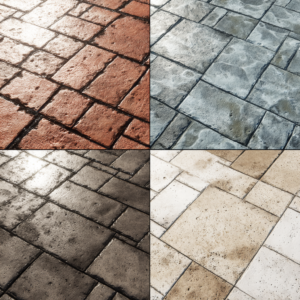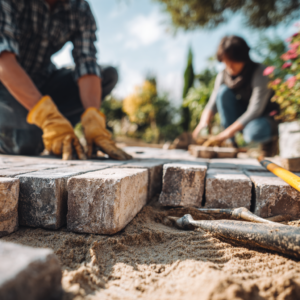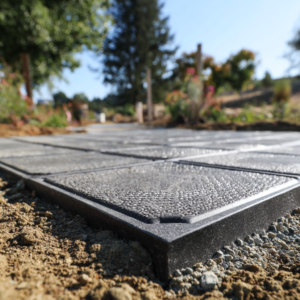Fire pits are a popular addition to outdoor spaces, providing warmth, ambiance, and a gathering spot for family and friends. However, when it comes to placing a fire pit on a patio or deck, safety is a paramount concern. Rubber pavers have gained popularity recently, leading to the question: Can you put a fire pit on rubber pavers?
In this article, we will delve into the subject, exploring the safety considerations, practicality, and alternative options for incorporating a fire pit onto a rubber paver surface.
To start things off, let’s talk about the safety considerations when working with fire pits.
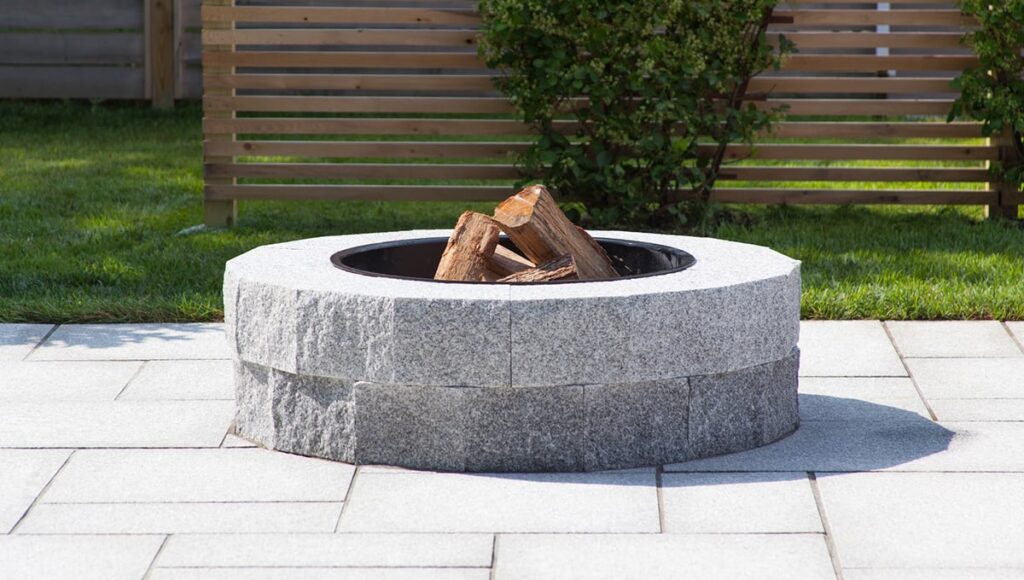
Jump to:
Can you put a fire pit on rubber pavers? Understanding fire-pit safety measures
The most important order of business is to maintain a safe distance between fire pits and any combustible materials, such as structures, plants, and flammable surfaces. This distance should be determined by local fire safety regulations and guidelines, so check with your local authorities before planning anything.
Fire pits emit radiant heat, which can pose a threat to nearby materials if not properly managed. To mitigate this risk, ensure that the fire pit is placed on a non-flammable surface, such as concrete or gravel, and create a designated fire-safe zone around the pit by clearing away any combustible materials.
So that by itself already answers the question: you should not put a fire pit on rubber pavers.
Some options of rubber pavers are designed to have “heat resistance capabilities”; however, the degree of heat tolerance usually refers to exposure to the sun on warm days, not nearly enough to withstand a fire pit.
Extreme heat can cause the rubber to melt or warp, potentially compromising its structural integrity. To prevent this, ensure that the rubber pavers are placed at a safe distance from the fire pit, adhering to the manufacturer’s recommendations. Regularly inspect the pavers for any signs of melting or warping, and replace them if necessary to maintain safety.
Your best course of action is to completely remove the rubber pavers around the fire pit and replace them with concrete or brick pavers, for example.
Alternative options
Concrete and brick pavers have a much superior resistance to heat than rubber pavers. They are known for their excellent heat resistance properties, making them a safer option for fire pit placement. These materials can withstand high temperatures without melting, warping, or compromising their structural integrity.
In addition to their heat resistance, stone or concrete pavers can add a touch of elegance to your outdoor space. They come in various colors, textures, and patterns, allowing you to create a visually appealing fire pit area. Moreover, these pavers are durable and can withstand heavy foot traffic and exposure to the elements.
Another sound option is to place the fire pit directly on bare ground. This eliminates the risk of heat damage to pavers altogether. This option is particularly suitable for open areas where the ground is not covered by combustible materials.
When opting for a ground-level fire pit, it is crucial to adhere to strict fire safety precautions.
Ensure that the fire pit is placed in a cleared area with no flammable vegetation or debris nearby. Create a fire-safe zone by removing any combustible materials near the fire pit. Consider using a fire pit with a sturdy base or ring to contain the flames and prevent spreading.
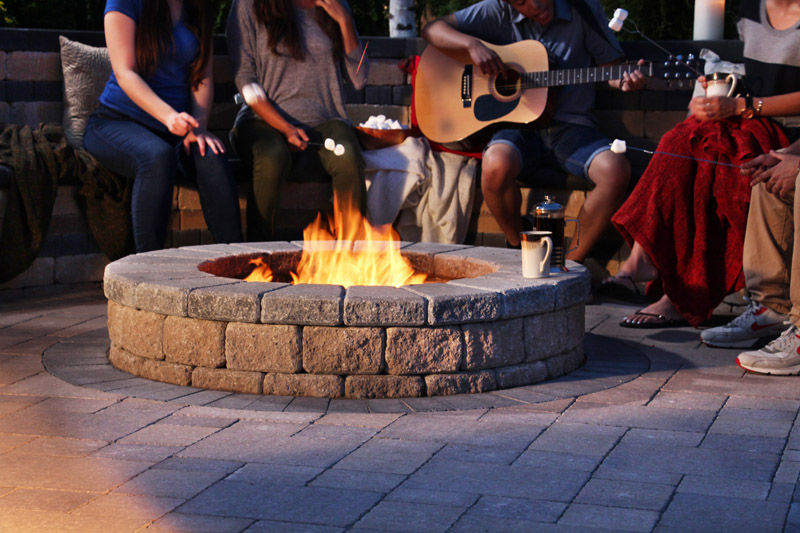
Fire pit safety tips – heads up!
- Never leave a fire pit unattended, and ensure that it is fully extinguished before leaving the area or going to bed. Use water or sand to extinguish the fire completely, and avoid using flammable liquids to accelerate the process.
- Position the fire pit in an open area with proper ventilation to allow the smoke to disperse easily. Avoid placing the fire pit under low-hanging tree branches or near structures that may obstruct the airflow.
- Maintain a safe distance between the fire pit and any surrounding structures, plants, or flammable materials. Follow local fire safety regulations and guidelines to determine the required clearance distance.
- Keep a fire extinguisher, a garden hose, or a bucket of water nearby for immediate access in case of emergencies. Familiarize yourself with how to use the fire extinguisher effectively.
- Supervise children and pets around the fire pit at all times. Create a designated safe area or barrier to prevent accidental contact with the fire.
- Once again, familiarize yourself with local regulations and any restrictions on fire pit usage in your area. Some communities may have specific rules regarding fire pit placement, size, and fuel type.
Fire pit on rubber pavers: avoid it at all costs
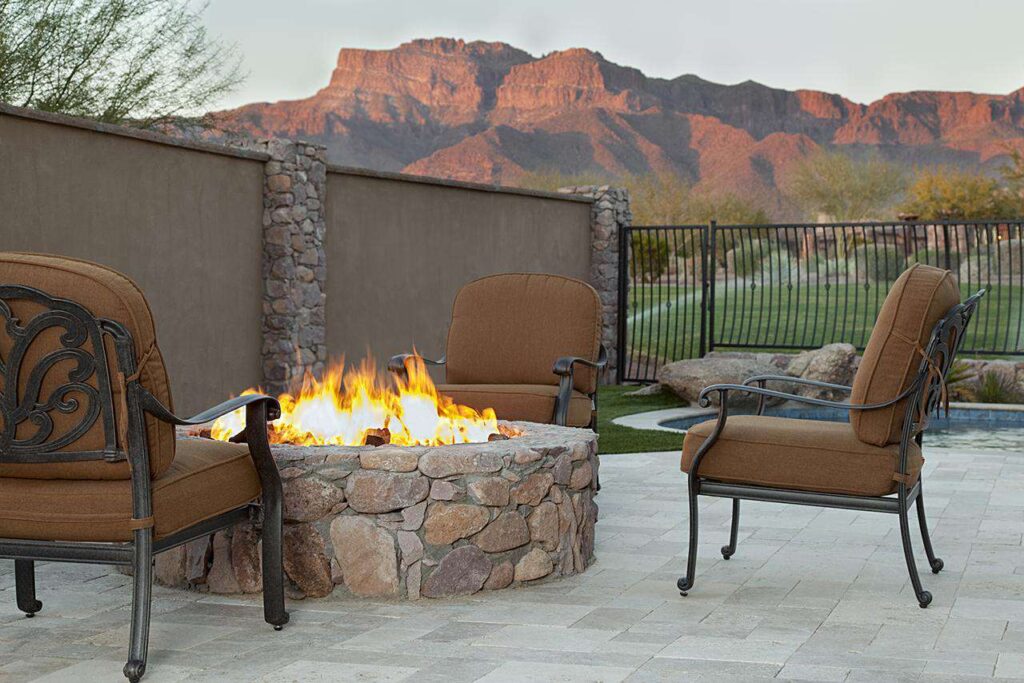
Rubber pavers are not a very good choice as a flooring option. Placing a fire pit directly on them is a recipe for disaster. They don’t have enough heat resistance to withstand a fire pit.
Considering these factors, it is generally advisable to explore alternative options for fire pit placement, such as stone or concrete pavers, bare ground, or dedicated fire pit platforms that are designed for heat resistance and fire safety. These alternatives provide a safer and more suitable foundation for your fire pit while minimizing the risks associated with using rubber pavers.
We here at JS Brick have helped build countless fire pits over our 23 years of experience in the hardscape industry. We know how tricky things can get and how important it is to know exactly what you are doing every step of the way when building a fire pit.
That’s why we always recommend that people reach out to professional hardscape contractors around their area to help them with their fire pit projects.
And if you happen to be around our area of activity, the Sarasota County, in FL, you can always reach out to us to help you with anything you need. We would be glad to add you to our long list of satisfied customers!

